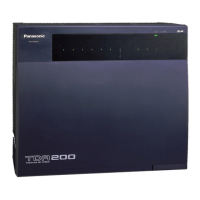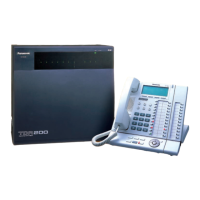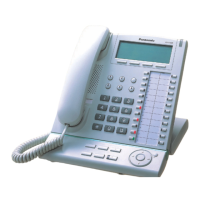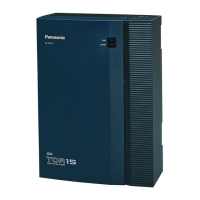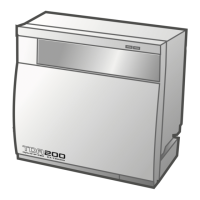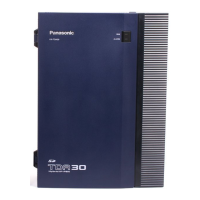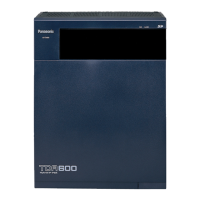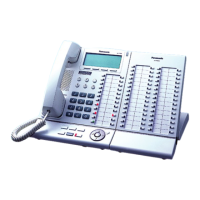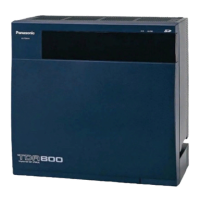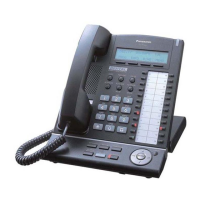Recording Quality
Recording Time with the
ESVM2/ESVM4 Card
Recording Time with the MSG4
Card
Low about 120 minutes about 8 minutes
When cards of different types are installed, the shortest recording time is used. For example, if an
ESVM4 card and an MSG4 card are installed, the maximum recording time at default will be about 8
minutes.
Note
When MSG/ESVM card expansion has been completed, the new card is blank—all necessary
messages will need to be stored in the card. This can be done in two ways:
a. By installing the new MSG/ESVM card then recording each message again. The PBX will
automatically store the new recordings in each card.
b. By transferring messages from the PBX to a PC using the Maintenance Console, then transferring
them back to the PBX with the new MSG/ESVM card installed.
• The same message can also be played simultaneously to multiple callers.
• Recording Methods
a. Record voice messages through the extension telephone
b. Transfer prerecorded voice messages from external sound source into the PBX via an external music
port.
Note
Record voice messages only; avoid the recording of music.
However, it is possible to record music when using an ESVM card in High Recording Quality mode.
• After recording messages, a manager extension can also play them back for confirmation.
• Progress tone is sent to a manager extension before recording messages during a preprogrammed time
period, or during clearing the prerecorded message stored at the floating extension number of desired
message. The longer one is applied.
• When the manager tries to record a message, he will hear ringback tone if a message channel is in use.
When all ports of the MSG/ESVM card(s) become idle, he will hear the progress tone for a preprogrammed
time period.
After that, the PBX will automatically proceed into the recording mode.
Installation Manual References
2.6.1 OPB3 Card (KX-TDA0190)
2.6.6 MSG4 Card (KX-TDA0191)
2.6.7 ESVM2 Card (KX-TDA0192) and ESVM4 Card (KX-TDA0194)
PC Programming Manual References
2.6.6 Utility—Message File Transfer PC to PBX
2.6.7 Utility—Message File Transfer PBX to PC
3.38 [1-1] Slot—OPB3 Card Property—
MSG Feature
4.4 [2-3] Timers & Counters—DISA / Door / Reminder / U. Conf— DISA—Progress Tone Continuation Time
before Recording Message
4.8 [2-6-1] Numbering Plan—Main—Features— OGM Record / Clear / Playback
5.15 [3-5-2] Incoming Call Distribution Group—Queuing Time Table— Queuing Sequence—Sequence 01–
16
7.3 [5-3-1] Voice Message—DISA System—Option 2— Recording Mode
7.4 [5-3-2] Voice Message—DISA Message— Floating Extension Number
188 Feature Guide
1.17.5 Outgoing Message (OGM)
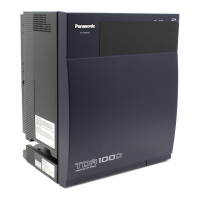
